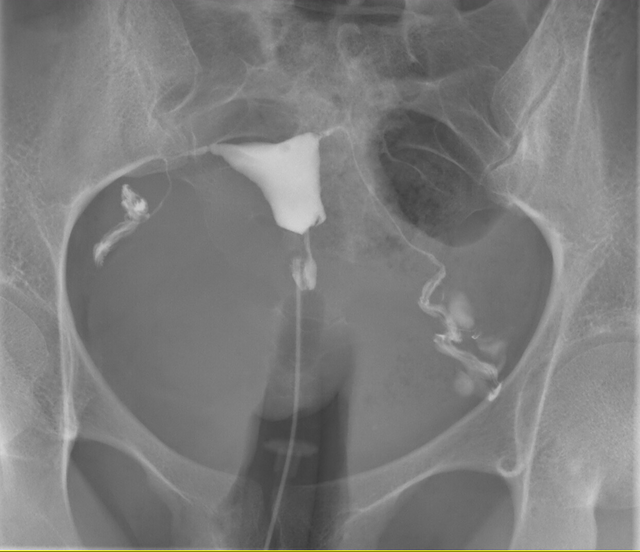Hysterosalpingography (HSG) is a special X-ray test used to examine a woman’s womb and fallopian tubes. It helps doctors check for tubal blockages, abnormalities, or other issues that might be affecting fertility. The procedure uses a contrast dye and X-ray imaging to create images of the reproductive tracts.
Why is HSG Done?
Doctors recommend HSG for women who are having difficulty getting pregnant or experiencing repeated miscarriages. It helps to:
- Check if the fallopian tubes are open or blocked.
- Identify problems with the shape or structure of the uterus.
- Assess the effects of previous surgeries, infections, or conditions like endometriosis.
How to Prepare for HSG
- The test is usually done between days 7 and 10 of your menstrual cycle (after your period but before ovulation).
- You may be advised to take a pain reliever (e.g., ibuprofen) about an hour before the test to reduce discomfort.
- Inform your doctor if you have any allergies, especially to iodine or contrast dye.
- Avoid sexual intercourse a few days before the test, as directed by your doctor.
- Some women may be prescribed antibiotics before or after the procedure to prevent infection.
What Happens During the Procedure?
- Positioning: You will lie on an X-ray table, similar to a pelvic exam.
- Insertion of Speculum: A speculum is inserted into the vagina to allow access to the cervix.
- Dye Injection: A thin tube is inserted into the cervix, and a contrast dye is slowly injected into the uterus and fallopian tubes.
- X-ray Imaging: As the dye moves through the reproductive system, X-ray images are taken to check for blockages or abnormalities.
- Completion: The procedure takes about 10–15 minutes and is performed in a hospital or radiology clinic.
Is HSG Painful?
Many women experience mild to moderate discomfort, similar to serious menstrual cramps, when the dye is injected. However, the pain is usually brief. In rare cases, some women may feel lightheaded or experience mild spotting afterward.
What Do the Results Mean?
- Normal: If the dye flows freely through both fallopian tubes and into the abdominal cavity, the tubes are open.
- Blocked Tubes: If the dye does not pass through one or both tubes, it may indicate a blockage, which can affect fertility.
- Uterine Abnormalities: The test can reveal fibroids, polyps, scarring, or congenital abnormalities.
After the Procedure
- You may have mild cramping and light spotting for a day or two.
- You can return to normal activities immediately, but avoid sexual intercourse for 24–48 hours as advised by your doctor.
- If you experience severe pain, fever, heavy bleeding, or foul-smelling discharge, contact your doctor immediately.
Next Steps
If your HSG shows a blockage or abnormality, your doctor will discuss further tests or treatment options, such as surgery or assisted reproductive techniques like IVF. In some cases, the test itself may help open minor blockages, improving fertility.
If you have any concerns about HSG, consult your doctor for personalized advice.
